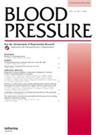欧洲高血压学会卓越中心新冠肺炎相关高血压相关诊断和治疗程序的减少
IF 2.3
4区 医学
Q2 PERIPHERAL VASCULAR DISEASE
引用次数: 9
摘要
摘要背景新冠肺炎大流行使许多国家减少了与新冠肺炎无关的诊断和治疗程序。我们探讨了对三级高血压护理的影响。方法我们对6 欧洲高血压学会卓越中心网络内的高血压护理关键程序。结果总共有来自18个欧洲国家和3个非欧洲国家的54个卓越中心参加。从2019年到2020年,每个中心的动态血压监测中位数显著下降(2019/2020年ABPM:544/289)、肾动脉双相超声(双相RA:88.5/55)、肾血管计算机断层摄影/磁共振成像血管造影术(CT/MRI RA:66/19.5)、经皮肾动脉血管成形术(PTA RA:5/1),儿茶酚胺(116/67.5)和肾素/醛固酮(146/83.5)的实验室检测(p < 所有比较分别为0.001)。尽管在2019年和2020年的比较中,所有评估的诊断和治疗程序在所有年度3个月内都有所减少,但最明显的减少发生在2020年4月至6月,这是受影响最严重国家的第一波和第一次封锁期间。在此期间,与2019年相比,2020年的中位降幅分别为50.7%(ABPM)、47.1%(双工性RA)、50%(CT/MRI RA)、57.1%(PTA RA)、46.9%(儿茶酚胺)和41.0%(肾素/醛固酮)。3个月时间间隔之间减少的总体差异具有统计学意义。结论在新冠肺炎大流行的第一年,与高血压相关的诊断和治疗程序大幅减少,其中第一次封锁期间减少最多。血压控制以及最终心血管事件的长期后果仍有待调查。本文章由计算机程序翻译,如有差异,请以英文原文为准。
Covid-19 associated reduction in hypertension-related diagnostic and therapeutic procedures in Excellence Centers of the European Society of Hypertension
Abstract Background The Covid-19 pandemic necessitated a decrease in non-Covid-19 related diagnostic and therapeutic procedures in many countries. We explored the impact on tertiary hypertension care. Methods We conducted an electronic survey regarding 6 key procedures in hypertension care within the Excellence Center network of the European Society of Hypertension. Results Overall, 54 Excellence Centers from 18 European and 3 non-European countries participated. From 2019 to 2020, there were significant decreases in the median number per centre of ambulatory blood pressure monitorings (ABPM: 544/289 for 2019/2020), duplex ultrasound of renal arteries (Duplex RA: 88.5/55), computed tomographic/magnetic resonance imaging angiography of renal arteries (CT/MRI RA: 66/19.5), percutaneous angioplasties of renal arteries (PTA RA: 5/1), laboratory tests for catecholamines (116/67.5) and for renin/aldosterone (146/83.5) (p < 0.001 for all comparisons, respectively). While reductions in all assessed diagnostic and therapeutic procedures were observed in all annual 3-months periods in the comparisons between 2019 and 2020, the most pronounced reduction occurred between April and June 2020, which was the period of the first wave and the first lockdown in most affected countries. In this period, the median reductions in 2020, as compared to 2019, were 50.7% (ABPM), 47.1% (Duplex RA), 50% (CT/MRI RA), 57.1% (PTA RA), 46.9% (catecholamines) and 41.0% (renin/aldosterone), respectively. Overall differences in reduction between 3-month time intervals were statistically highly significant. Conclusion Diagnostic and therapeutic procedures related to hypertension were dramatically reduced during the first year of the Covid-19 pandemic, with the largest reduction during the first lockdown. The long-term consequences regarding blood pressure control and, ultimately, cardiovascular events remain to be investigated.
求助全文
通过发布文献求助,成功后即可免费获取论文全文。
去求助
来源期刊

Blood Pressure
医学-外周血管病
CiteScore
3.00
自引率
5.60%
发文量
41
审稿时长
6-12 weeks
期刊介绍:
For outstanding coverage of the latest advances in hypertension research, turn to Blood Pressure, a primary source for authoritative and timely information on all aspects of hypertension research and management.
Features include:
• Physiology and pathophysiology of blood pressure regulation
• Primary and secondary hypertension
• Cerebrovascular and cardiovascular complications of hypertension
• Detection, treatment and follow-up of hypertension
• Non pharmacological and pharmacological management
• Large outcome trials in hypertension.
 求助内容:
求助内容: 应助结果提醒方式:
应助结果提醒方式:


